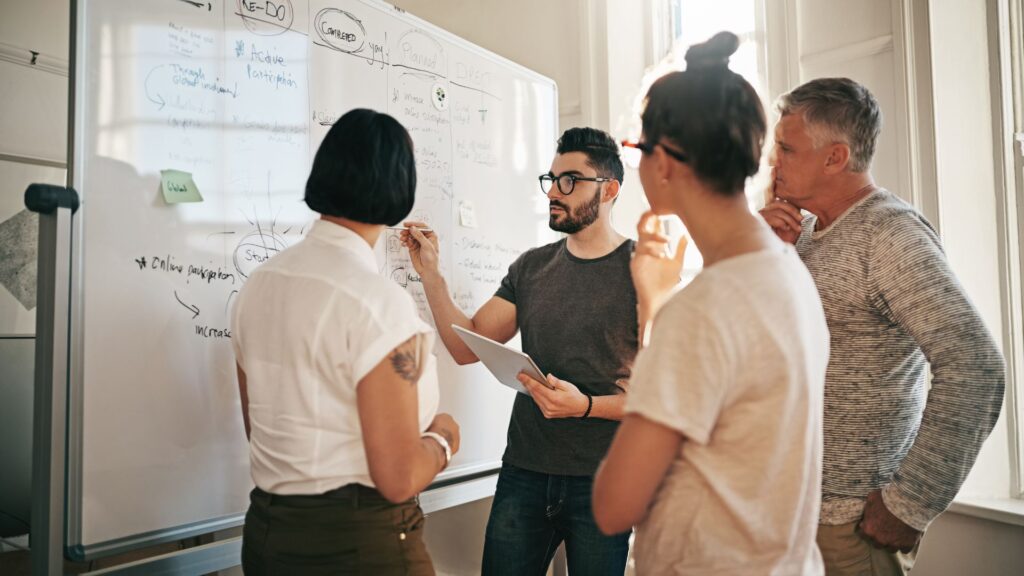By Liz Horvath, Senior Advisor, Psychological Health and Safety
“We don’t know where to start.”
“We have done some mental health training, but we don’t know what to do next.”
“We assessed the thirteen factors of The National Standard, but we are stuck – we are still having trouble in some areas to get to solutions that work.”
If any of this sounds familiar, you are not alone.
After nearly 30 years of helping organizations with integration of health and safety management systems, I have seen these types of scenarios numerous times. It can be quite frustrating for everyone involved. Often, the fundamentals of a systems approach to integration have not been built into the organization’s strategies and action plans.
It’s not surprising, considering that much of the focus has been on mental health training and initiatives, workplace harassment and violence programs, and in some cases, psychological safety. While these are needed and helpful, they tend to place the onus on individuals to participate without addressing the underlying causes and concerns that may be contributing to a worker’s overall stress load.
How does an organization reduce the risk associated with psychosocial factors such as workload, psychological demands, or organizational culture? How do we create a working environment where people are respectful and know they can trust that issues will be appropriately dealt with? How do we know workers who need support are indeed getting the support they need? All workers, including those with mental health conditions, and those who are equity deserving, whose experience of the workplace is different from others?
It’s great to have a leader who is passionate about the wellbeing of their people, but it’s not enough. I have seen some companies with fabulous organizational culture crumble with a change in leadership, because the fundamentals of supporting worker’s to succeed were not baked into the organization’s strategies and operational plans. The passion left with the passionate person. I have also seen companies go from toxic environments with combative meetings to highly engaged and collaborative, very quickly, when a systems approach was implemented.
Understanding the Systems Approach
I always remember a statement that my OHS law professor, Dr. Peter Strahlendorf, used to say. “When there is an accident, there has been a failure of the management system. This is not a failure of management, but of the system. Find the system failure, and you can deal with the root cause.”
I’ve been a management systems geek ever since.
A systems approach to psychological health and safety views the workplace as an interconnected whole. Instead of treating it as a collection of isolated parts, this approach recognizes that elements like work culture, leadership styles, policies, programs, processes, work design, facilities, equipment, and employee interactions are interrelated. When one part of the system is missing or out of balance, it can impact other parts of the system.
Addressing Root Causes
A systems approach looks at the broader picture that empowers these parts to address root causes, therefore improving your ability to prevent and correct work-related hazards and situations that can cause or contribute to stress and harm.
Research supports this perspective: a study published in the Journal of Occupational Health Psychology found that comprehensive workplace mental health programs that address systemic factors result in greater reductions in absenteeism and presenteeism compared to isolated interventions.
The Role of Leadership
Leadership is pivotal in a systems approach. Leaders set the tone for workplace culture and hold ultimate responsibility and accountability for how resources are allocated and used. Research in the Harvard Business Review shows that leaders who model and advocate for mental health practices significantly enhance employee well-being and engagement. Training leaders to recognize signs of distress, communicate openly about mental health, and foster a safe environment can lead to improved outcomes across the organization. Equally important, people in leadership roles need to have a clear understanding of how the decisions they make in any area can affect the wellbeing and success of those who are tasked with doing the work. Well-informed leaders have a better understanding the costs and benefits of their decisions.
Integrating Policies and Practices
Integrating mental wellbeing and psychological health and safety into organizational policies and practices is a critical element of a systems approach. Evidence suggests this integration leads to tangible benefits. For instance, a report from the World Health Organization highlights that organizations with comprehensive mental health policies experience up to a 30% reduction in employee turnover and absenteeism. By revising HR policies to support work-life balance, redesigning job roles to minimize stress, and implementing holistic training programs, organizations create a more supportive and productive environment.
Employee Involvement and Feedback
Engaging employees in key activities and processes that can impact the psychological health and safety of workers is essential. The Journal of Occupational Health Psychology found that organizations actively seeking and incorporating employee feedback into mental health strategies see higher levels of employee satisfaction and reduced stress. This participatory approach not only helps design better policies but also fosters a culture of trust and collaboration. Active and meaningful participation is a foundational element of the National Standard of Canada for Psychological Health and Safety in the Workplace.
Measuring and Adapting
A systems approach also involves establishing baseline success criteria, and then monitoring progress, measuring impact, and making adjustments as needed. Research from the American Psychological Association shows that organizations regularly assessing and adjusting their mental health strategies achieve improved outcomes in employee well-being and organizational performance. This iterative process ensures the organization remains responsive to emerging challenges and opportunities, leading to sustained improvements in mental health.
Bringing it All Together:
Investing in a comprehensive, systemic approach to psychological health and safety yields substantial returns, similar to the benefits seen with effective OHS management systems. Moving from reactive solutions to a proactive, holistic strategy ensures that the elements of good psychological health and safety management are woven into the fabric of organizational practices, leading to lasting improvements that support the success of workers and the organization for generations to come.
Citations:
- Journal of Occupational Health Psychology
- Reference: Nielsen, K., & Munir, F. (2009). “Workplace interventions for reducing work-related stress.” Journal of Occupational Health Psychology, 14(1), 41-60.
- Summary: This study discusses the effectiveness of comprehensive workplace interventions in reducing stress and improving overall mental health outcomes compared to isolated interventions.
- Harvard Business Review
- Reference: Coutu, D. L. (2006). “How Resilience Works.” Harvard Business Review, 84(5), 46-55.
- Summary: This article explores the role of leadership in fostering resilience and psychological safety in the workplace, emphasizing how leaders who model and advocate for mental health practices can significantly enhance employee well-being and engagement.
- World Health Organization (WHO)
- Reference: World Health Organization. (2014). “Mental Health and Work: Impact, Issues, and Good Practices.” WHO Publications.
- Summary: This report highlights the benefits of comprehensive mental health policies in organizations, including reductions in employee turnover and absenteeism.
- Journal of Occupational Health Psychology
- Reference: Koopmans, L., Bernaards, C. M., Hildebrandt, V. H., Schaufeli, W. B., & de Vet, H. C. W. (2014). “Conceptual frameworks of individual work performance: A systematic review.” Journal of Occupational Health Psychology, 19(1), 1-14.
- Summary: This study examines the importance of employee involvement and feedback in designing effective mental health strategies and how it contributes to higher levels of satisfaction and reduced stress.
- American Psychological Association (APA)
- Reference: American Psychological Association. (2017). “Workplace Mental Health: Current State and Future Directions.” APA Publications.
- Summary: This report provides insights into the importance of ongoing assessment and adaptation of mental health strategies to improve employee well-being and organizational performance.


